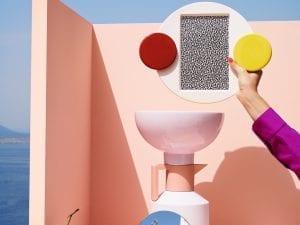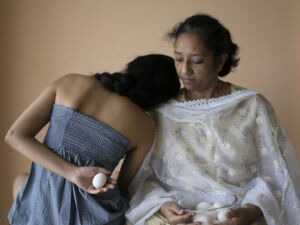In a constantly developing world, Reginald Van de Velde’s photographs provide an oasis for reflection on the passage of time, offering a new perspective on previously abandoned settings. Whilst the search for innovation and renewal is at the forefront of society, with ever more information increasingly recorded, dilapidated buildings become an ironic haven for the contemporary audience – locations and dates are lost to colossal monuments and overgrown nature.
Images from Memento Mori – selected for the Aesthetica Art Prize 2018 – combine stories about the fragility of life and, more importantly, the delicate nature of our memories. The series preserves history when there is no one left to experience it.
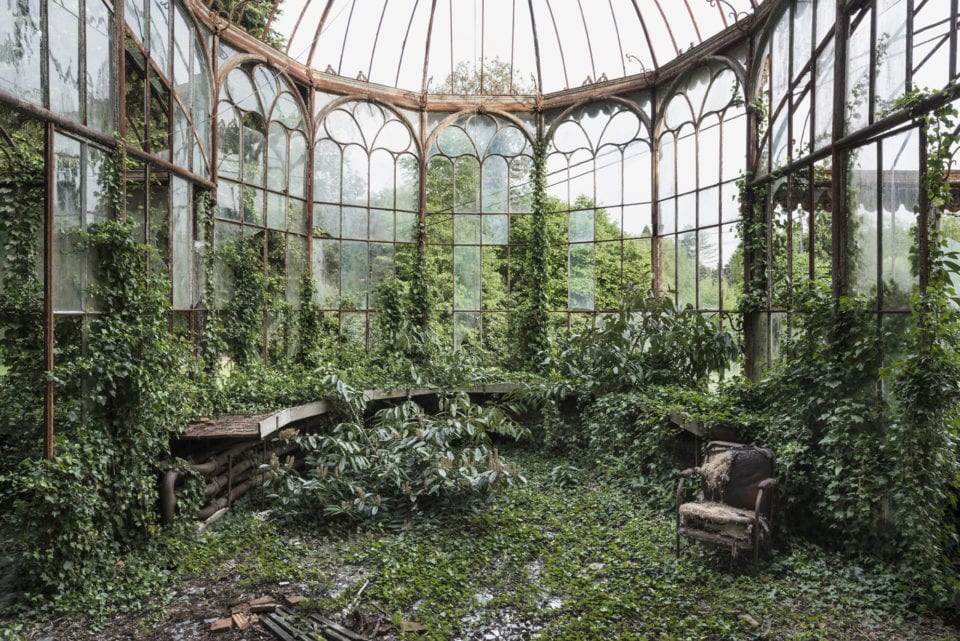
A: How do you respond to the idea that contemporary art is a mechanism for understanding the world around us?
RVdV: Art has always been a way to understand and interpret the world around us, much like literature or philosophy. Artistic expression, since the early stages of humanity up until our time, has provided us with very specific means of coping with the intricacies and complexities of our world, so often filled with situations we have a hard time grasping or coming to terms with. Since art also comes from a very personal place, it allows us a glimpse into how others see and perceive the world, creating an ever-growing pool of shared experience which enables us to grow empathy, cultivate understanding and raise consciousness on important issues.
A: Why do you think it’s important to document history through architecture?
RVdV: I come across so many beautiful buildings during my travels and explorations. Silent witnesses from bygone eras, offering a glimpse of forgotten grandeur. It’s always heart-breaking to see them in such a state of neglect, especially if you know how luxurious and prosperous these properties once were.
By capturing the beauty of solitude in those places, and presenting them in a series that evokes melancholy, I try to create awareness. I’m making a manifesto of the momentariness of things. As a wanderer of wastelands, I journey all over the world, trying to capture the momentum of splendour still undisturbed by the turmoil and temptations of modern society. I’m a vagabond for lost beauty, a chronicler of forgotten magnificence.
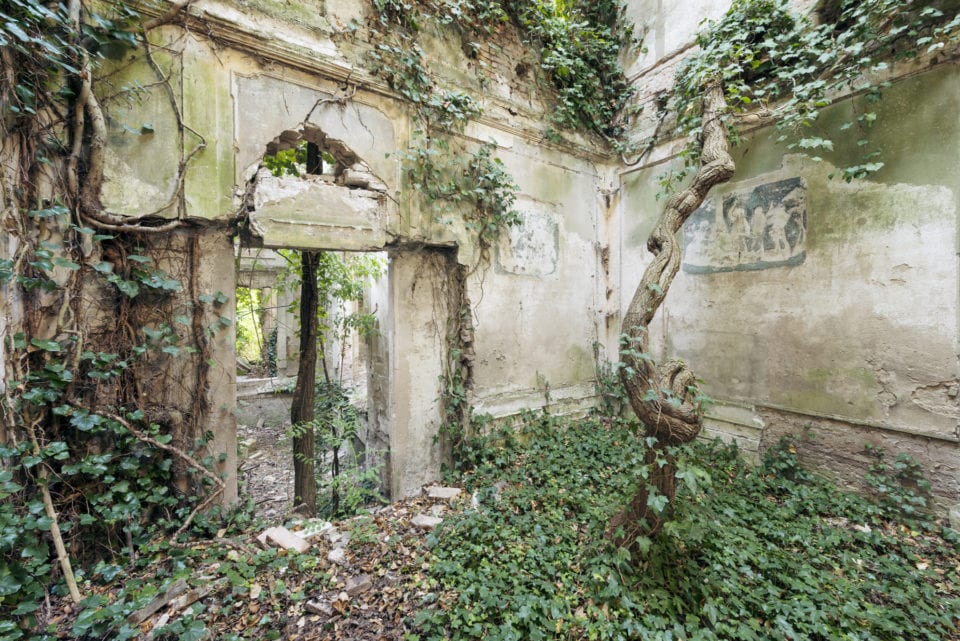
A: Where do you find your inspiration?
RVdV: For a very long time Andreas Gursky was my absolute hero – seeing prints of this German master up0close is simply an amazing experience. In recent years my idolism shifted, and I fell in love with the photographic works of Edward Burtynsky. I admire his impeccable style and perfection in the way he portrays altered landscapes.
A discovery I made just a couple of months ago is the Dutch photographer Eddo Hartmann. There are so many monographs being published on the subject of North Korea these days, but the way Eddo captured daily life & routines inside this communist state is from another league. So pure.
But my absolute hero is and remains Nadav Kander, a photographer from Israel. His book Yangtze – The Long River is a true masterpiece and quite frankly the best photography book I have ever seen. Incredibly epic and at the same time very poetic.
A: How do you think that your works offer audiences an alternate world away from a globalised and digitalised landscape?
RVdV: I consider myself a hunter for moments perfectly still in time, audibly quieter than the deafening humanity around us ever so busy with its realities and worries. And in those moments my work begins. I play with symmetry and cameras, ever searching for the freshness of a new sight.
It is quite ironic, in a sense, to seek out freshness precisely in those places where there is none left. Yet in a world in which all the information is readily available at the tips of our fingers, that freshness remains a precious commodity, as well as time. I wish to offer my viewers both of these things. To distort their perception of time as much as it is distorted in the places they are looking at. To offer them a tiny fraction of solitude in a world moving too fast. To let them catch their breaths.
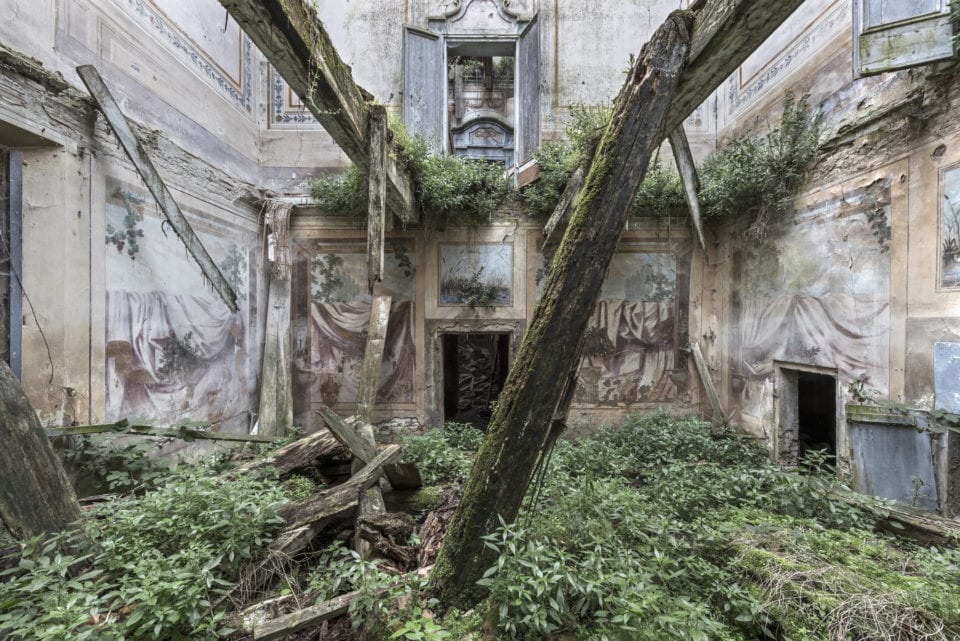
A: The exhibition at York Art Gallery focuses on over-stimulation in culture today, offering new modes of communication. How do you think your artwork fits into this?
RVdV: My photos depict a parallel world, a world that’s hidden within our world. Most of the time we’re not aware of their existence, yet these abandoned places are embedded into our everyday lives. And it’s this everyday life – with all its chaos and worries – that I want to run away from. Escapism is at the basis of my explorations, and it’s the beauty of solitude I want to capture and share through my photographs.
A: You have previously been featured in Aesthetica. Why do you think that this award is so important for you – both professionally and personally?
RVdV: From a graphic designers’ perspective, I was completely in awe when I got my first copy of Aesthetica Magazine. Its design and layout were flawless, and the content showed an aesthetic I haven’t seen in other magazines. It’s pure delight to browse through the magazine. And the annual Aesthetica Art Prize is the perfect continuation of that same concept and quality. The works being shortlisted are top of the heap, representing true excellence. This award is big. I am very honoured to be part of this!
The Aesthetica Art Prize exhibition opens 18 May at York Art Gallery. Click here for more information.
Entries are open for the 2019 edition of the Aesthetica Art Prize until 31 August. To enter, or to find out more, click here.
Credits:
1. Reginald Van de Velde, from Memento Mori. Courtesy of the artist.
Join the conversation; follow us on Instagram, Twitter, Facebook and Pinterest.



